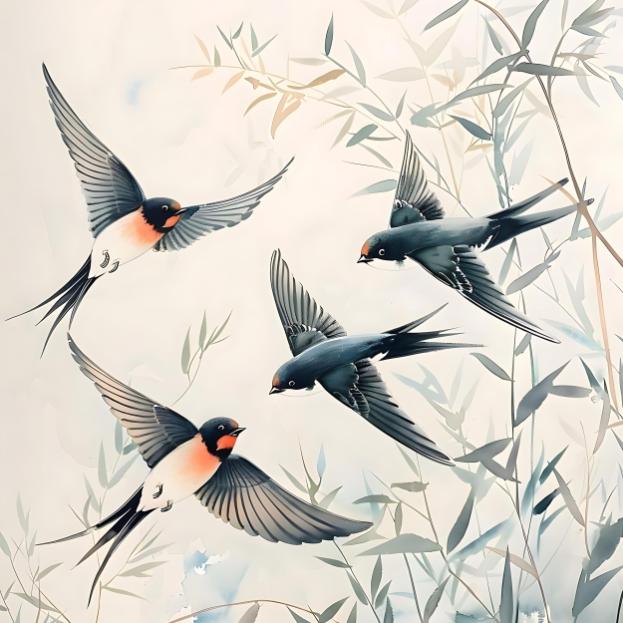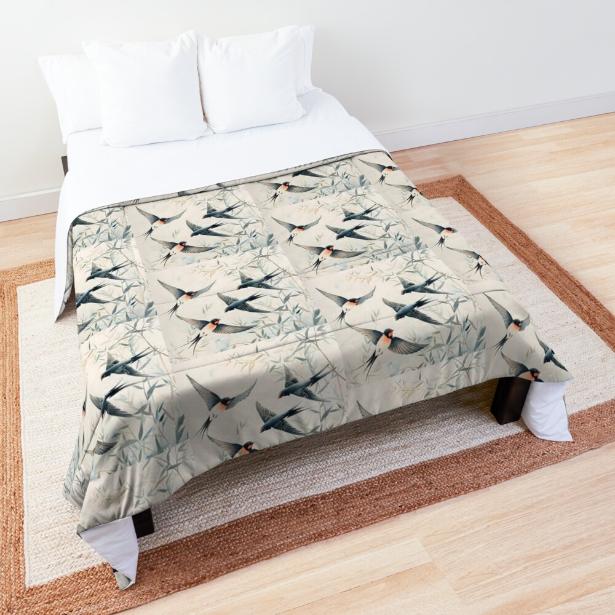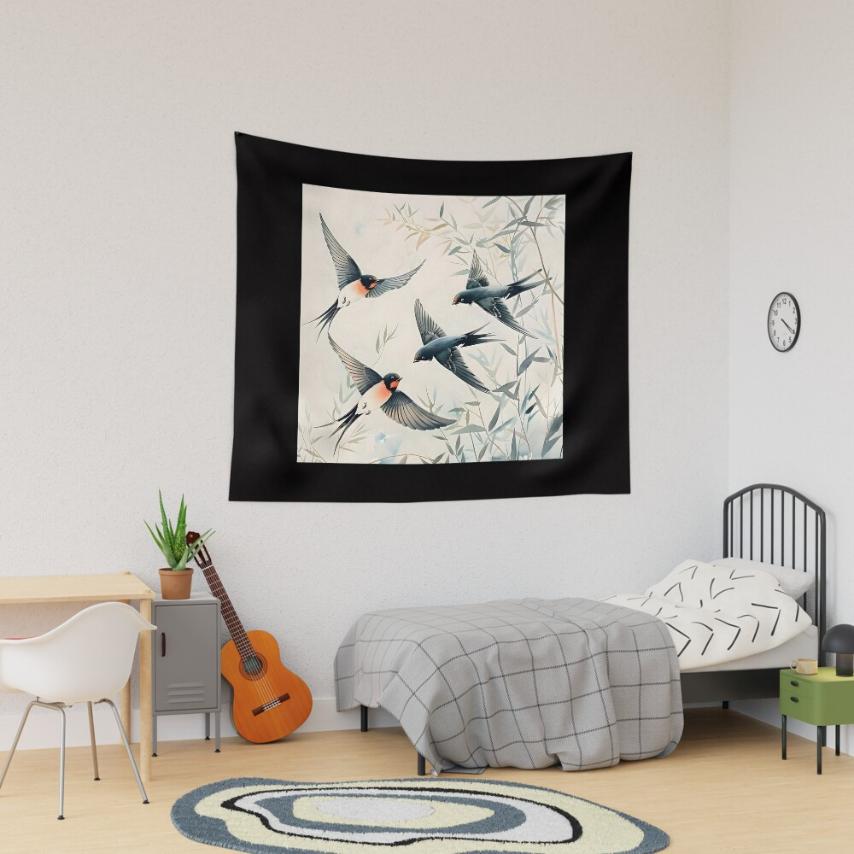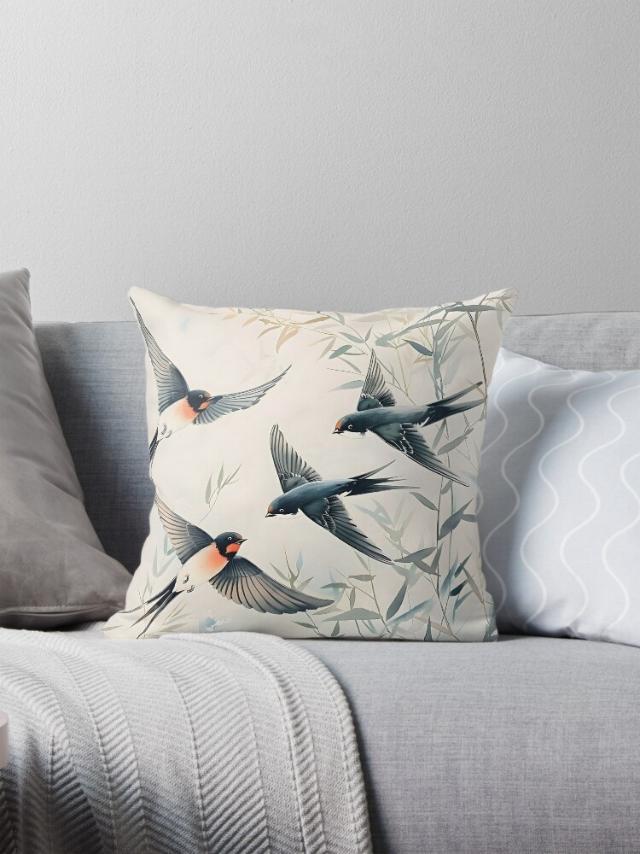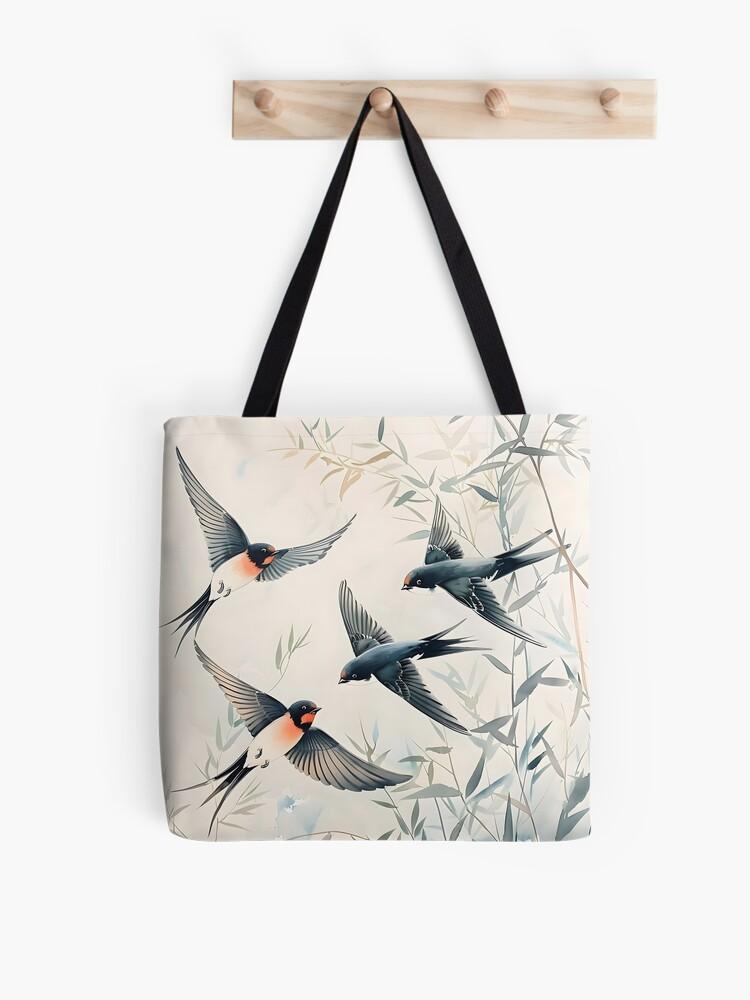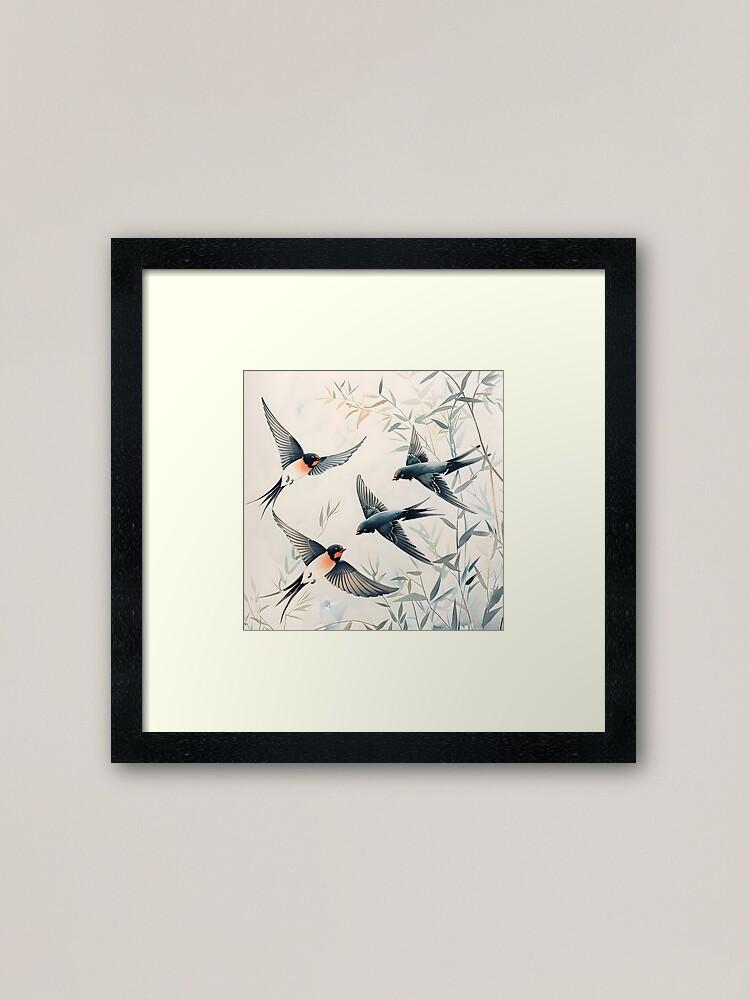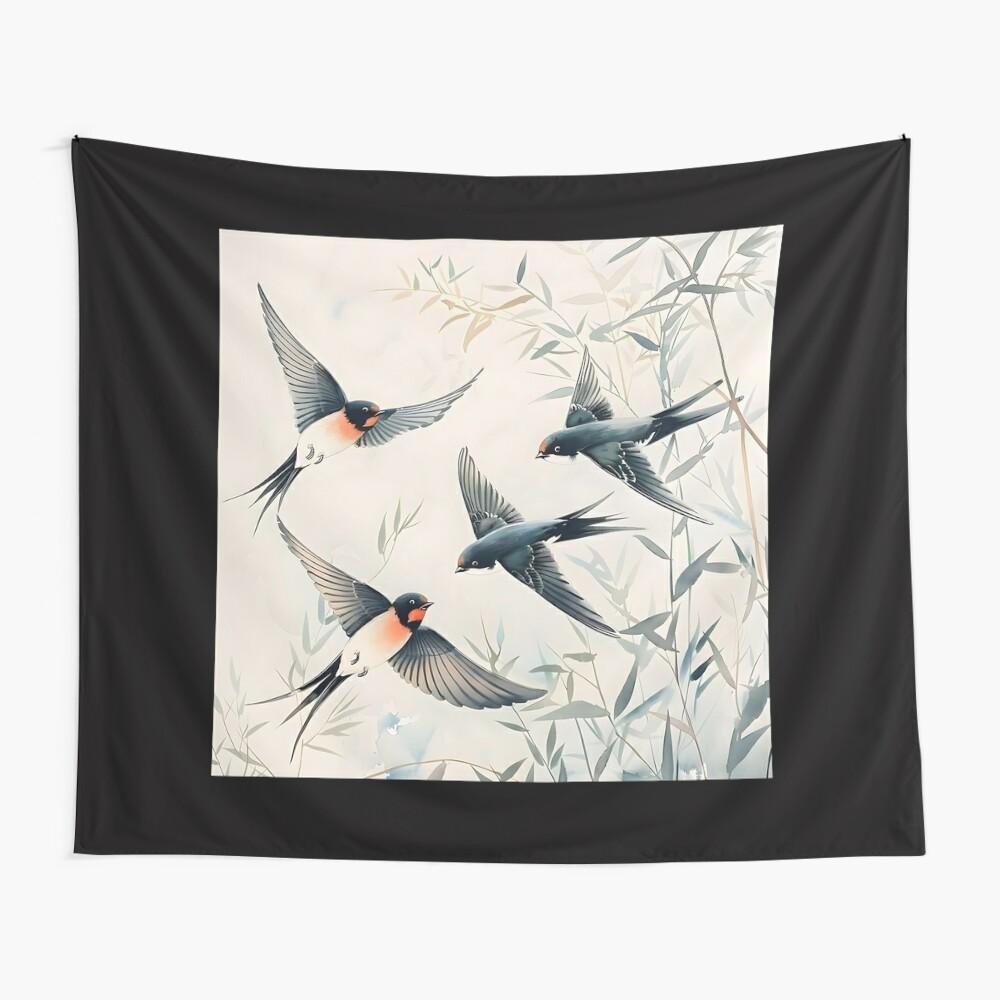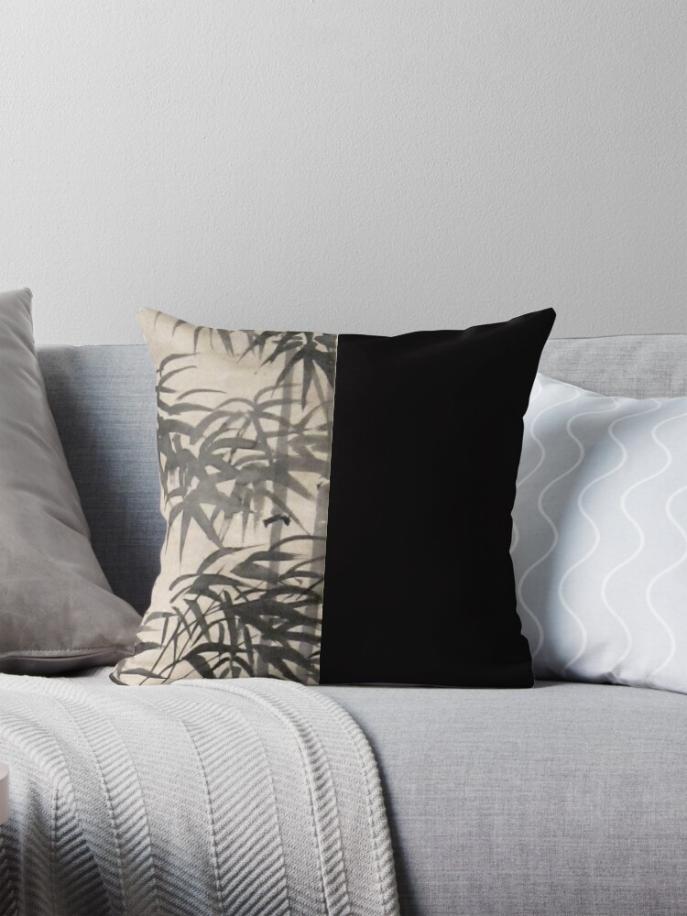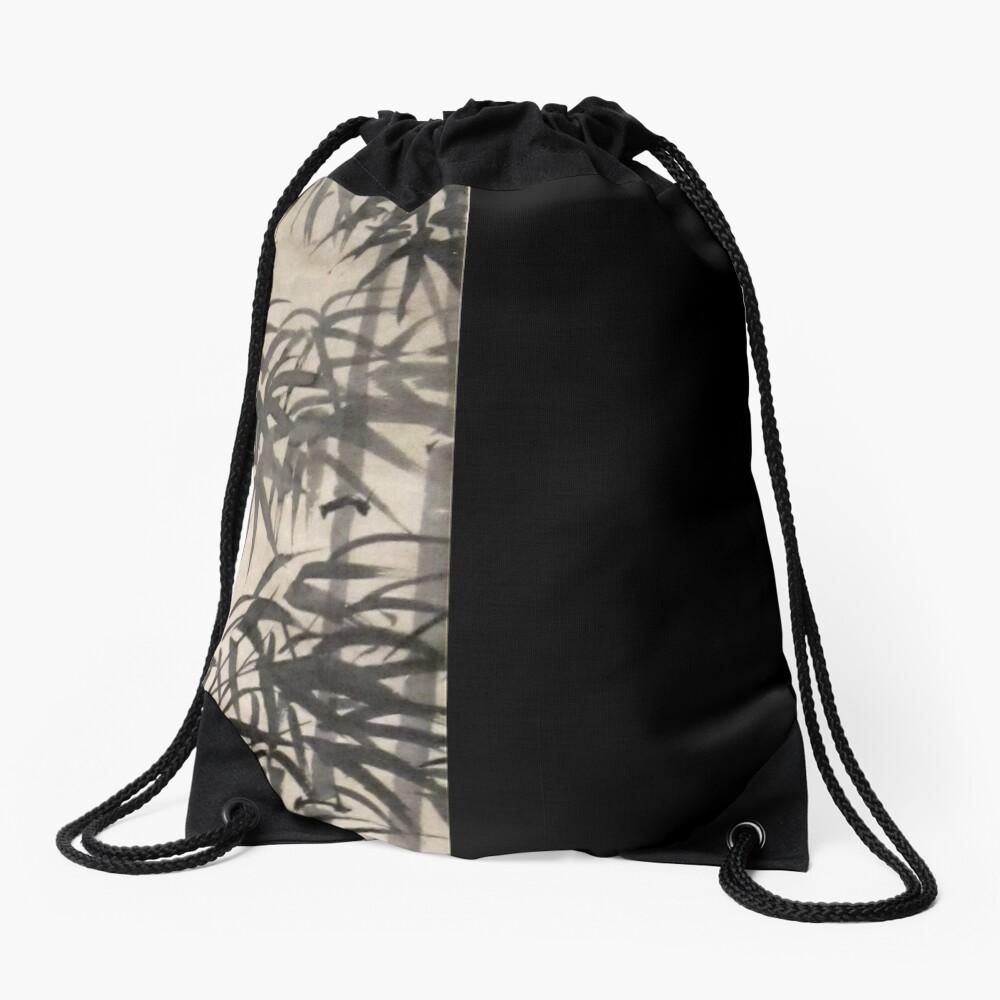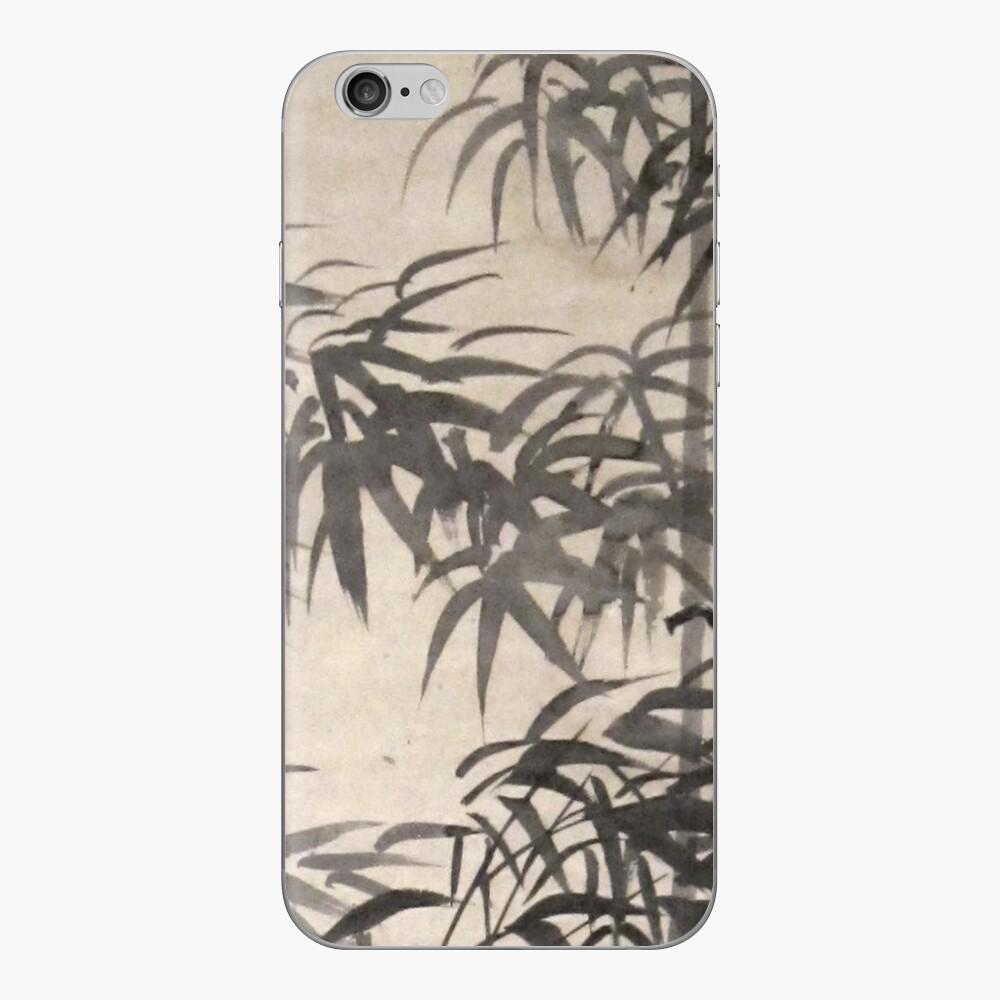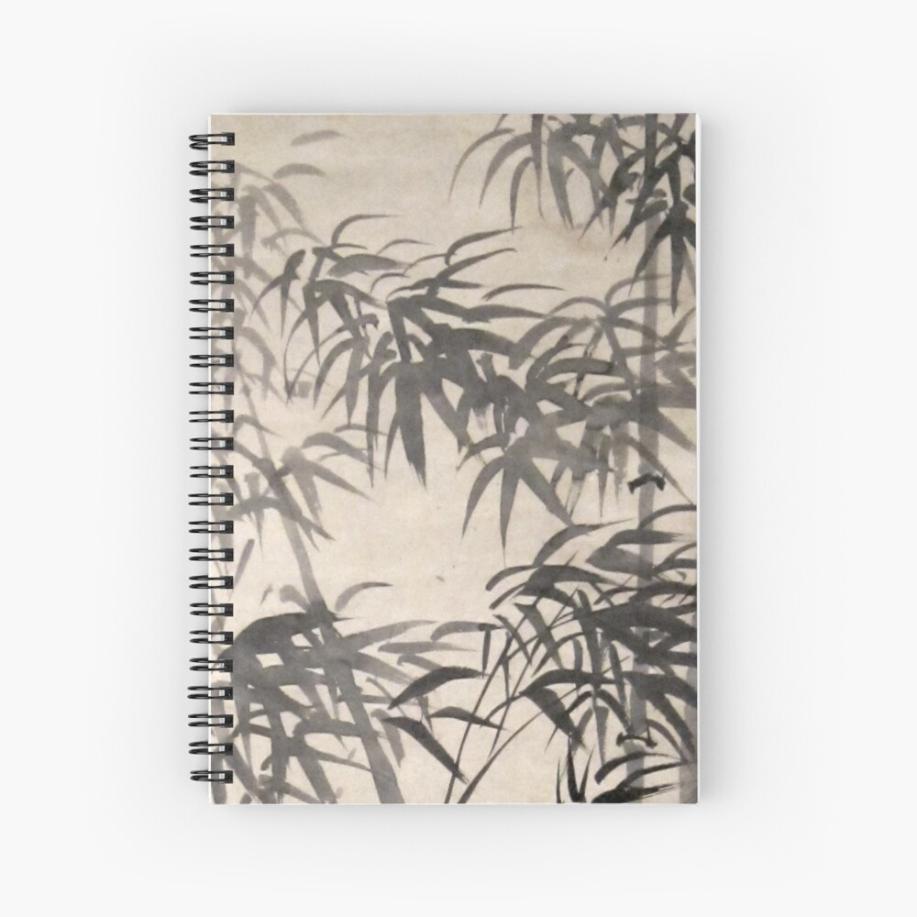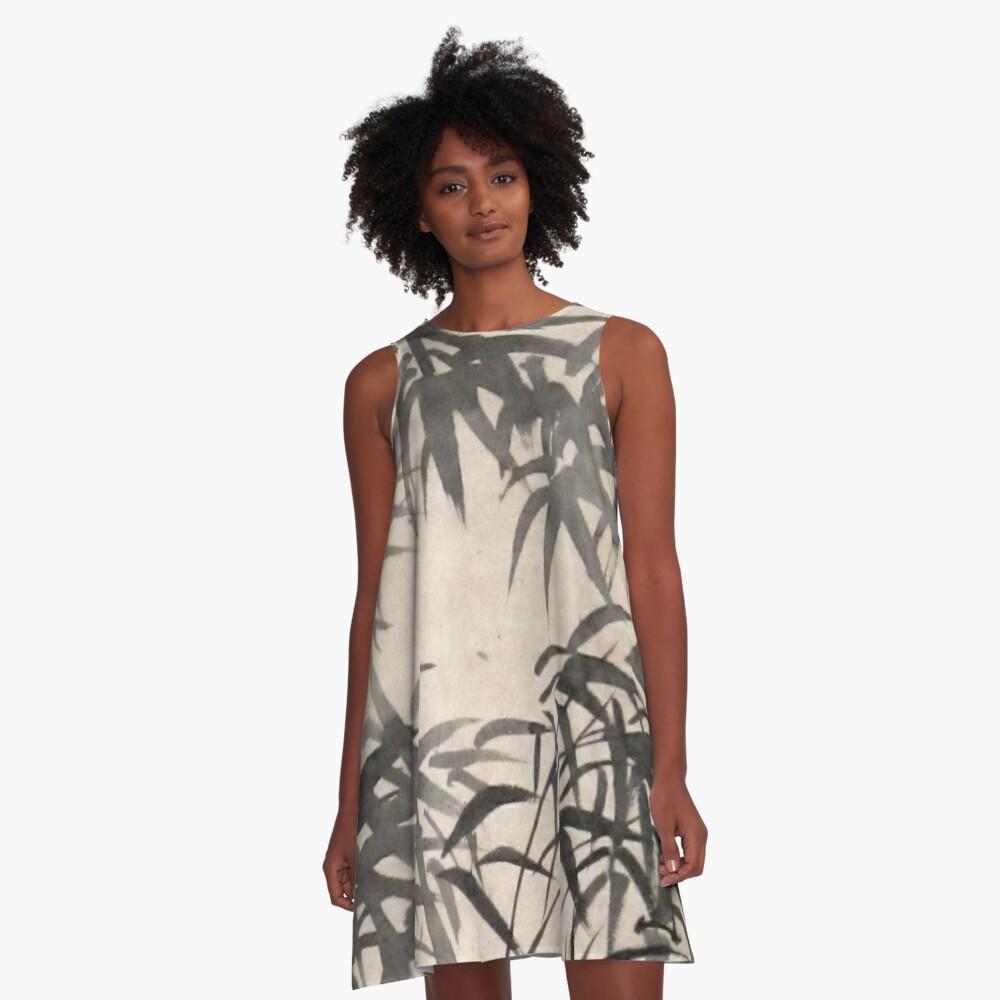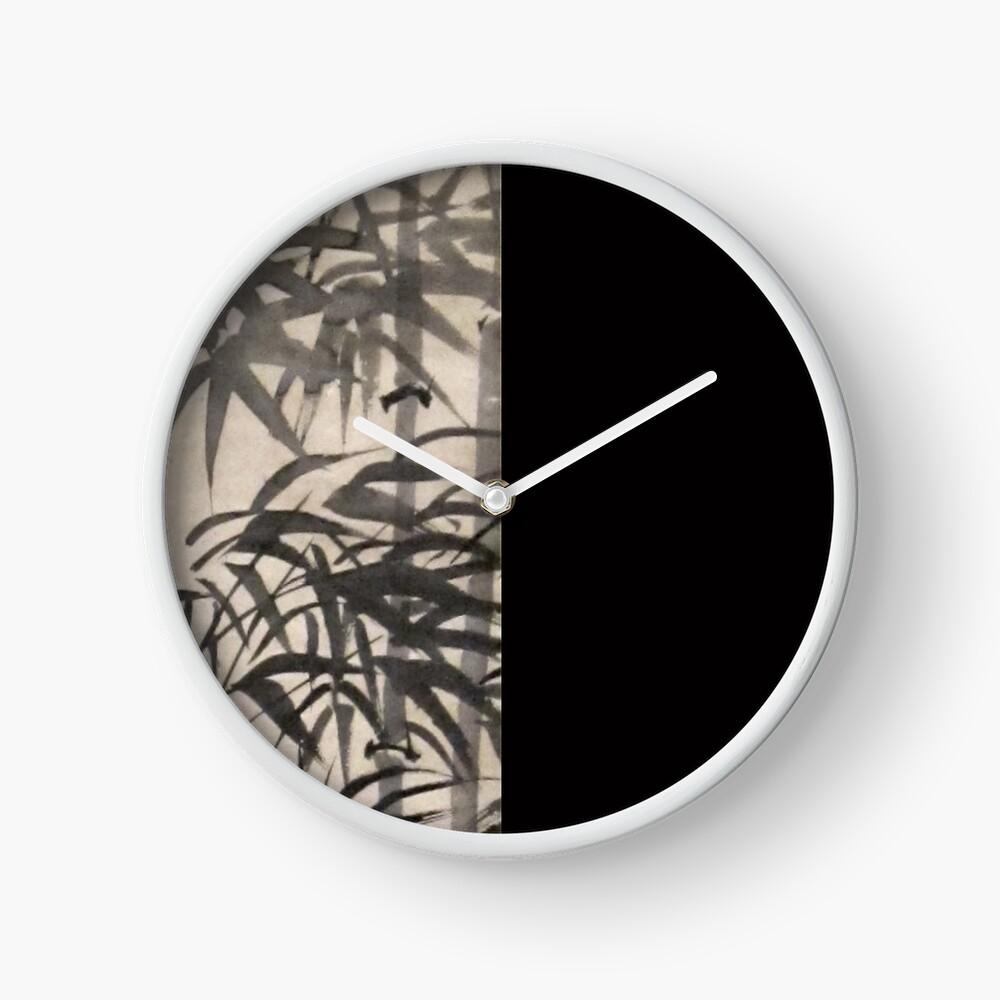- The Beginnings of Bamboo Painting
- Bamboo Art Through the Dynasties
- Bamboo Today: A Living Tradition
- Techniques in Chinese Bamboo Painting
- Cultural Significance of Bamboo in Chinese Art
- Reflections: The Lasting Beauty of Bamboo Art
- FAQ

Have you ever wondered why bamboo is so significant in Chinese artChinese art encompasses a vast array of forms and influences. It has a rich history that dates back over 5,000 years and is characterized by unique regional, philosophical, and political influences that have evolved over millennia. Ancient Era The origins of Chinese art trace back to prehistoric times, highlighted by significant archaeological discoveries. These findings include pottery, jade carvings, and More?
We might be misguided that it’s just a common plant. But as we dig further, we soon find that bamboo represents many values important to Chinese culture: flexibility, integrity, and resilience.
For centuries, bamboo has inspired artists to capture these qualities in traditional inkInk, a liquid or paste used for writing, drawing, and printing, has played a crucial role in communication and artistic expression throughout history. Made from various pigments and dyes, ink allows for the transfer of text and images onto surfaces such as paper, fabric, and other materials. Types of Ink There are several types of ink, each serving different purposes More paintings. Looking at a bamboo paintingBamboo painting is a celebrated genre within traditional Chinese art, embodying strength, flexibility, and grace. This art form not only represents the physical characteristics of bamboo but also conveys deeper philosophical and cultural meanings. Key Characteristics • Materials: Artists use traditional tools like bamboo brushes, ink sticks, and rice paper. These materials are essential for capturing the essence of bamboo. More, you’ll notice the artist’s skill in portraying this balance—firm yet flowing lines that convey simplicity and depth.
Bamboo paintings offer a unique glimpse into the soul of Chinese artChinese art encompasses a vast array of forms and influences. It has a rich history that dates back over 5,000 years and is characterized by unique regional, philosophical, and political influences that have evolved over millennia. Ancient Era The origins of Chinese art trace back to prehistoric times, highlighted by significant archaeological discoveries. These findings include pottery, jade carvings, and More traditions. These works invite us to pause and reflect, encouraging a deeper appreciation of both the visual elegance and the philosophical life lessons.

The Beginnings of Bamboo Painting
You may be surprised to learn that calligraphyCalligraphy, the art of beautiful writing, has been practiced for centuries across various cultures. This artistic form of writing emphasizes the aesthetic presentation of letters and symbols, combining skillful penmanship with artistic expression. Historical Overview • Origins: Ancient civilizations such as China, Egypt, and Rome • Chinese Calligraphy: Developed around 2000 BC, using brush and ink • Islamic Calligraphy: Flourished More and bamboo paintingBamboo painting is a celebrated genre within traditional Chinese art, embodying strength, flexibility, and grace. This art form not only represents the physical characteristics of bamboo but also conveys deeper philosophical and cultural meanings. Key Characteristics • Materials: Artists use traditional tools like bamboo brushes, ink sticks, and rice paper. These materials are essential for capturing the essence of bamboo. More are directly related in Chinese artChinese art encompasses a vast array of forms and influences. It has a rich history that dates back over 5,000 years and is characterized by unique regional, philosophical, and political influences that have evolved over millennia. Ancient Era The origins of Chinese art trace back to prehistoric times, highlighted by significant archaeological discoveries. These findings include pottery, jade carvings, and More. This relationship developed when calligraphers used bamboo as a motif to convey their expertise and worldviews. Through their brushworkMasterful brushwork is often the defining feature of great artists, where the brush becomes an extension of their arm, allowing paint to flow effortlessly onto the canvas. These artists demonstrate a profound understanding of their medium, knowing precisely when to apply thick, textured strokes or smooth, delicate ones. Their skill extends beyond mere color application; it's about the artistry of More, they embedded each piece with their understanding of balance and resilience.
In its early days, bamboo art served as a practice ground for calligraphers to refine their brushworkMasterful brushwork is often the defining feature of great artists, where the brush becomes an extension of their arm, allowing paint to flow effortlessly onto the canvas. These artists demonstrate a profound understanding of their medium, knowing precisely when to apply thick, textured strokes or smooth, delicate ones. Their skill extends beyond mere color application; it's about the artistry of More. But it quickly evolved into a standalone art form. The techniques these artists used in applying inkInk, a liquid or paste used for writing, drawing, and printing, has played a crucial role in communication and artistic expression throughout history. Made from various pigments and dyes, ink allows for the transfer of text and images onto surfaces such as paper, fabric, and other materials. Types of Ink There are several types of ink, each serving different purposes More and crafting each stroke were much like those used in writing, giving the paintings a rhythmic and almost poetic quality.

Bamboo Art Through the Dynasties
Chinese history has seen the evolution of bamboo paintingBamboo painting is a celebrated genre within traditional Chinese art, embodying strength, flexibility, and grace. This art form not only represents the physical characteristics of bamboo but also conveys deeper philosophical and cultural meanings. Key Characteristics • Materials: Artists use traditional tools like bamboo brushes, ink sticks, and rice paper. These materials are essential for capturing the essence of bamboo. More with every new dynasty.
The Han Dynasty (206 BCE – 220 CE) laid the groundwork for bamboo paintingBamboo painting is a celebrated genre within traditional Chinese art, embodying strength, flexibility, and grace. This art form not only represents the physical characteristics of bamboo but also conveys deeper philosophical and cultural meanings. Key Characteristics • Materials: Artists use traditional tools like bamboo brushes, ink sticks, and rice paper. These materials are essential for capturing the essence of bamboo. More as a part of Chinese decorative arts. At that time, it was mostly used in ornamental designs and on everyday objects. While not yet prominent in mainstream art, these early representations sowed the seeds for later artistic exploration.
By the Tang Dynasty (618-907 CE), bamboo paintingBamboo painting is a celebrated genre within traditional Chinese art, embodying strength, flexibility, and grace. This art form not only represents the physical characteristics of bamboo but also conveys deeper philosophical and cultural meanings. Key Characteristics • Materials: Artists use traditional tools like bamboo brushes, ink sticks, and rice paper. These materials are essential for capturing the essence of bamboo. More had become a respected art form among scholars and poets who infused their works with personal and moral significance. Artists led the way with quick, spirited brushstrokes that brought bamboo to life on the paper, symbolizing traits like resilience and adaptability.
During the Song Dynasty (960-1279 CE), bamboo paintingBamboo painting is a celebrated genre within traditional Chinese art, embodying strength, flexibility, and grace. This art form not only represents the physical characteristics of bamboo but also conveys deeper philosophical and cultural meanings. Key Characteristics • Materials: Artists use traditional tools like bamboo brushes, ink sticks, and rice paper. These materials are essential for capturing the essence of bamboo. More became deeply intertwined with literati culture. It grew into a prominent medium for both aesthetic and philosophical expression. This era is noted for its refined approach to art, where painters infused their work with personal reflections and cultural values. The bamboo plant was particularly respected by those educated in Confucian traditions, and seen as a symbol of moral strength and personal growth.
The renowned inkInk, a liquid or paste used for writing, drawing, and printing, has played a crucial role in communication and artistic expression throughout history. Made from various pigments and dyes, ink allows for the transfer of text and images onto surfaces such as paper, fabric, and other materials. Types of Ink There are several types of ink, each serving different purposes More bamboo painter Wen Tong (文同) was known for his deep connection with bamboo, famously described as having “whole bamboos in his heart” (胸有成竹). Through their work, scholars and artists of the Song Dynasty expressed strong reflections on endurance and moral virtues, elevating bamboo from a simple subject to a central theme in their spiritual and ethical discussions.
In the Yuan Dynasty (1271-1368 CE), during the Mongol rule, bamboo art took on a powerful role, symbolizing both beauty, scholarly resistance and personal expression. This period was marked by a deep adherence to Confucian ideals, which artists like Zhao Mengfu (趙孟頫) boldly infused into their bamboo paintings. They used their art as a form of quiet rebellion, a way to honor the fallen Song Dynasty and subtly resist their Mongol overlords.
Bamboo held a special place in this artistic and cultural upheaval. It was featured in art categories like the “Four Noble Kind” (四君子) and the “Three Friends of Winter” ( 岁寒三友). Particularly in the latter one, which also includes pine trees and plum blossoms, the resilience of these plants during the harsh winter months became a metaphor for the enduring spirit of the people.
While bamboo and pine remained evergreen and plum blossoms began to bloom, they collectively embodied the Confucian virtues of perseverance and moral integrity, serving as symbols of hope and resistance amidst the challenges of Mongol governance.
During the Ming Dynasty (1368-1644 CE), bamboo paintingBamboo painting is a celebrated genre within traditional Chinese art, embodying strength, flexibility, and grace. This art form not only represents the physical characteristics of bamboo but also conveys deeper philosophical and cultural meanings. Key Characteristics • Materials: Artists use traditional tools like bamboo brushes, ink sticks, and rice paper. These materials are essential for capturing the essence of bamboo. More continued to develop and was significantly influenced by the cultural and artistic shifts of the era. This period saw a return to native Chinese rule after the Mongol-led Yuan Dynasty, which led to a resurgence in traditional Chinese arts and culture.
The Ming Dynasty is noted for its refined literati culture, where scholar-artists played a crucial role in the arts. These literati, or Wenren (文人), often combined their skills in paintingPainting is a fundamental form of visual art that has been practiced for thousands of years. It involves applying pigment to a surface such as canvas, paper, or a wall. Painting can be explored through various styles, techniques, and mediums, each offering unique possibilities for expression and creativity. Historical Background • Ancient Beginnings: The history of painting dates back to More, poetry, and calligraphyCalligraphy, the art of beautiful writing, has been practiced for centuries across various cultures. This artistic form of writing emphasizes the aesthetic presentation of letters and symbols, combining skillful penmanship with artistic expression. Historical Overview • Origins: Ancient civilizations such as China, Egypt, and Rome • Chinese Calligraphy: Developed around 2000 BC, using brush and ink • Islamic Calligraphy: Flourished More, creating deeply integrated works that reflected their personal philosophies and the aesthetics of restraint and subtlety. Bamboo, with its strong associations with resilience, integrity, and straightforwardness, was a favored subject among these scholars.
One of the key figures during this time was Wen Zhengming (文征明), who was a prolific painter, a highly respected calligrapher, and poet. His works are characterized by a meticulous style, where every brushstroke and inkInk, a liquid or paste used for writing, drawing, and printing, has played a crucial role in communication and artistic expression throughout history. Made from various pigments and dyes, ink allows for the transfer of text and images onto surfaces such as paper, fabric, and other materials. Types of Ink There are several types of ink, each serving different purposes More wash was infused with philosophical meaning.
Wen Zhengming was part of the Wu School, which was central to the development of bamboo paintingBamboo painting is a celebrated genre within traditional Chinese art, embodying strength, flexibility, and grace. This art form not only represents the physical characteristics of bamboo but also conveys deeper philosophical and cultural meanings. Key Characteristics • Materials: Artists use traditional tools like bamboo brushes, ink sticks, and rice paper. These materials are essential for capturing the essence of bamboo. More during the Ming. This school favored a more personal and expressive approach to art, often reflecting the artist’s individuality and intellectual independence.
The Ming era’s emphasis on personal expression led to innovations in how bamboo was depicted, with artists exploring more dynamic compositions and integrating more vivid scenes of nature into their works.
Finally, in the Qing Dynasty (1644-1912 CE), bamboo paintingBamboo painting is a celebrated genre within traditional Chinese art, embodying strength, flexibility, and grace. This art form not only represents the physical characteristics of bamboo but also conveys deeper philosophical and cultural meanings. Key Characteristics • Materials: Artists use traditional tools like bamboo brushes, ink sticks, and rice paper. These materials are essential for capturing the essence of bamboo. More reached new heights of technical and artistic achievement. Innovators like Zheng Xie (郑燮) combined their unique calligraphic techniques with bamboo paintingBamboo painting is a celebrated genre within traditional Chinese art, embodying strength, flexibility, and grace. This art form not only represents the physical characteristics of bamboo but also conveys deeper philosophical and cultural meanings. Key Characteristics • Materials: Artists use traditional tools like bamboo brushes, ink sticks, and rice paper. These materials are essential for capturing the essence of bamboo. More, creating works that were both visually striking and philosophically profound.
Zheng was celebrated for his expressive freehand style (写意), which vividly captured the essence and resilience of bamboo. His works are noted for their dynamic use of inkInk, a liquid or paste used for writing, drawing, and printing, has played a crucial role in communication and artistic expression throughout history. Made from various pigments and dyes, ink allows for the transfer of text and images onto surfaces such as paper, fabric, and other materials. Types of Ink There are several types of ink, each serving different purposes More and their ability to convey the bamboo’s upright nature, reflecting the stoic and enduring qualities admired in Chinese culture.
Shitao (石涛), another key artist of this period, brought a deeply personal approach to bamboo paintingBamboo painting is a celebrated genre within traditional Chinese art, embodying strength, flexibility, and grace. This art form not only represents the physical characteristics of bamboo but also conveys deeper philosophical and cultural meanings. Key Characteristics • Materials: Artists use traditional tools like bamboo brushes, ink sticks, and rice paper. These materials are essential for capturing the essence of bamboo. More. His works often included poetic inscriptions, merging literary and visual arts in a way that resonated with the literati tradition of the time.
With their bamboo paintings, these artists reflected the tumultuous changes of the period, capturing the essence of resilience amid adversity.
Bamboo paintingBamboo painting is a celebrated genre within traditional Chinese art, embodying strength, flexibility, and grace. This art form not only represents the physical characteristics of bamboo but also conveys deeper philosophical and cultural meanings. Key Characteristics • Materials: Artists use traditional tools like bamboo brushes, ink sticks, and rice paper. These materials are essential for capturing the essence of bamboo. More has flourished throughout these dynasties, evolving and expanding with each new generation of artists. Bamboo paintingBamboo painting is a celebrated genre within traditional Chinese art, embodying strength, flexibility, and grace. This art form not only represents the physical characteristics of bamboo but also conveys deeper philosophical and cultural meanings. Key Characteristics • Materials: Artists use traditional tools like bamboo brushes, ink sticks, and rice paper. These materials are essential for capturing the essence of bamboo. More became a part of Chinese cultural and artistic history as each era added its unique innovations and flavor.

Bamboo Today: A Living Tradition
Today, bamboo paintingBamboo painting is a celebrated genre within traditional Chinese art, embodying strength, flexibility, and grace. This art form not only represents the physical characteristics of bamboo but also conveys deeper philosophical and cultural meanings. Key Characteristics • Materials: Artists use traditional tools like bamboo brushes, ink sticks, and rice paper. These materials are essential for capturing the essence of bamboo. More is as vibrant as it has ever been, bridging centuries-old traditions. Modern artists still pay homage to the classical methods of bamboo paintingBamboo painting is a celebrated genre within traditional Chinese art, embodying strength, flexibility, and grace. This art form not only represents the physical characteristics of bamboo but also conveys deeper philosophical and cultural meanings. Key Characteristics • Materials: Artists use traditional tools like bamboo brushes, ink sticks, and rice paper. These materials are essential for capturing the essence of bamboo. More, respecting the fluid strokes that define this art form. Yet, they’re not afraid to innovate, blending traditional techniques with modern concepts and materials.
This evolution has helped bamboo paintingBamboo painting is a celebrated genre within traditional Chinese art, embodying strength, flexibility, and grace. This art form not only represents the physical characteristics of bamboo but also conveys deeper philosophical and cultural meanings. Key Characteristics • Materials: Artists use traditional tools like bamboo brushes, ink sticks, and rice paper. These materials are essential for capturing the essence of bamboo. More stay appealing to a new generation of artists and art enthusiasts. For instance, some artists incorporate mixed mediaMixed media involves combining various art materials and techniques within a single artwork. This approach allows artists to explore diverse textures, effects, and expressions. Basic Components of Mixed Media • Traditional Media: Includes paints, inks, and pencils. • Non-Traditional Media: Items like fabric, metal, and found objects. • Digital Elements: Incorporating digital prints or using software for certain effects. Techniques More, introducing textures and colors that were not traditionally part of bamboo paintingBamboo painting is a celebrated genre within traditional Chinese art, embodying strength, flexibility, and grace. This art form not only represents the physical characteristics of bamboo but also conveys deeper philosophical and cultural meanings. Key Characteristics • Materials: Artists use traditional tools like bamboo brushes, ink sticks, and rice paper. These materials are essential for capturing the essence of bamboo. More. Or they might use bamboo as a motif in digital artDigital art refers to a range of artistic works and practices that use digital technology as an essential part of the creative or presentation process. Since the 1970s, various names have been used to describe the process, including computer art and multimedia art. Digital art is itself placed under the larger umbrella term of new media art. The digital art More projects. These contemporary interpretations keep the tradition fresh and exciting, ensuring it continues to resonate with people’s aesthetic sensibilities today.
From its early days to its modern expressions, bamboo paintingBamboo painting is a celebrated genre within traditional Chinese art, embodying strength, flexibility, and grace. This art form not only represents the physical characteristics of bamboo but also conveys deeper philosophical and cultural meanings. Key Characteristics • Materials: Artists use traditional tools like bamboo brushes, ink sticks, and rice paper. These materials are essential for capturing the essence of bamboo. More tells the ongoing story of Chinese cultural identity. It’s fascinating to see how this art genre has evolved with society but never fully lost sight of its origins throughout history.

Techniques in Chinese Bamboo Painting
Ever wondered how Chinese bamboo paintings capture such lifelike qualities with just a few strokes? It’s all in the unique techniques and mastery of the brush. Here’s a brief dive into the fascinating world of bamboo paintingBamboo painting is a celebrated genre within traditional Chinese art, embodying strength, flexibility, and grace. This art form not only represents the physical characteristics of bamboo but also conveys deeper philosophical and cultural meanings. Key Characteristics • Materials: Artists use traditional tools like bamboo brushes, ink sticks, and rice paper. These materials are essential for capturing the essence of bamboo. More:
The Brush:
Central to bamboo paintingBamboo painting is a celebrated genre within traditional Chinese art, embodying strength, flexibility, and grace. This art form not only represents the physical characteristics of bamboo but also conveys deeper philosophical and cultural meanings. Key Characteristics • Materials: Artists use traditional tools like bamboo brushes, ink sticks, and rice paper. These materials are essential for capturing the essence of bamboo. More is a versatile brush similar to those used in calligraphyCalligraphy, the art of beautiful writing, has been practiced for centuries across various cultures. This artistic form of writing emphasizes the aesthetic presentation of letters and symbols, combining skillful penmanship with artistic expression. Historical Overview • Origins: Ancient civilizations such as China, Egypt, and Rome • Chinese Calligraphy: Developed around 2000 BC, using brush and ink • Islamic Calligraphy: Flourished More. This tool’s ability to produce both delicate lines and bold, sweeping strokes is essential for capturing the grace and tenacity of bamboo.

Key Strokes:
- Bone Stroke: Used for the bamboo stalks, this stroke starts strong and tapers off smoothly, mimicking the natural tapering of bamboo. It combines force and fluidity, representing the bamboo’s strength and flexibility.
- Pecking Stroke: This technique creates the bamboo leaves with sharp, pointed ends, giving them a dynamic, fluttering look. It’s performed by dabbing the brush tip in a pecking motion, capturing the airy feel of the leaves.

Our Recommendation:
With the Yasutomo Bamboo Pen and Brush, you can experience the charm of traditional sumi inkInk, a liquid or paste used for writing, drawing, and printing, has played a crucial role in communication and artistic expression throughout history. Made from various pigments and dyes, ink allows for the transfer of text and images onto surfaces such as paper, fabric, and other materials. Types of Ink There are several types of ink, each serving different purposes More in your art. Made from hard bamboo, this dual-ended tool is perfect for both sketchingSketching is a fundamental practice in the art world, involving the creation of quick, loose drawings to capture basic shapes, forms, and ideas. It serves as the backbone for more detailed artworks and helps artists refine their concepts. Essential Sketching Supplies • Pencils: Ranging from hard (H) to soft (B) grades, providing a variety of lines and textures. • Paper: More and paintingPainting is a fundamental form of visual art that has been practiced for thousands of years. It involves applying pigment to a surface such as canvas, paper, or a wall. Painting can be explored through various styles, techniques, and mediums, each offering unique possibilities for expression and creativity. Historical Background • Ancient Beginnings: The history of painting dates back to More. One end offers a fine tip for precise drawings, while the brush end is ideal for fluid sumi inkInk, a liquid or paste used for writing, drawing, and printing, has played a crucial role in communication and artistic expression throughout history. Made from various pigments and dyes, ink allows for the transfer of text and images onto surfaces such as paper, fabric, and other materials. Types of Ink There are several types of ink, each serving different purposes More strokes. The removable brush tip fits neatly into the handle, making storage easy and safe. Whether you’re sketchingSketching is a fundamental practice in the art world, involving the creation of quick, loose drawings to capture basic shapes, forms, and ideas. It serves as the backbone for more detailed artworks and helps artists refine their concepts. Essential Sketching Supplies • Pencils: Ranging from hard (H) to soft (B) grades, providing a variety of lines and textures. • Paper: More or paintingPainting is a fundamental form of visual art that has been practiced for thousands of years. It involves applying pigment to a surface such as canvas, paper, or a wall. Painting can be explored through various styles, techniques, and mediums, each offering unique possibilities for expression and creativity. Historical Background • Ancient Beginnings: The history of painting dates back to More, this finely crafted instrument combines precision and convenience for your creative projects.

InkInk, a liquid or paste used for writing, drawing, and printing, has played a crucial role in communication and artistic expression throughout history. Made from various pigments and dyes, ink allows for the transfer of text and images onto surfaces such as paper, fabric, and other materials. Types of Ink There are several types of ink, each serving different purposes More Usage: The intensityIn color theory, intensity, also known as saturation or chroma, refers to the purity and vividness of a color. This property is essential for artists and designers as it helps create dynamic and engaging visuals. Intensity determines how bright or dull a color appears, influencing the overall impact and mood of a composition. Defining Intensity Intensity measures the degree of More of the inkInk, a liquid or paste used for writing, drawing, and printing, has played a crucial role in communication and artistic expression throughout history. Made from various pigments and dyes, ink allows for the transfer of text and images onto surfaces such as paper, fabric, and other materials. Types of Ink There are several types of ink, each serving different purposes More adds depth and texture.
- Darker shadesIn color theory, a shade is a darker version of a color, created by adding black to the original hue. This concept is essential for artists and designers, as it allows for a range of deeper, more intense tones that can add depth and drama to a composition. Defining Shade A shade results from mixing a pure hue with black. More provide weight and solidity to the stalks.
- Lighter shadesIn color theory, a shade is a darker version of a color, created by adding black to the original hue. This concept is essential for artists and designers, as it allows for a range of deeper, more intense tones that can add depth and drama to a composition. Defining Shade A shade results from mixing a pure hue with black. More can suggest distance or create a misty, ethereal quality, enhancing the painting’s serene atmosphere.

Our Recommendation:
The Yasutomo Liquid Sumi Ink is perfect for your sumi paintingPainting is a fundamental form of visual art that has been practiced for thousands of years. It involves applying pigment to a surface such as canvas, paper, or a wall. Painting can be explored through various styles, techniques, and mediums, each offering unique possibilities for expression and creativity. Historical Background • Ancient Beginnings: The history of painting dates back to More and calligraphyCalligraphy, the art of beautiful writing, has been practiced for centuries across various cultures. This artistic form of writing emphasizes the aesthetic presentation of letters and symbols, combining skillful penmanship with artistic expression. Historical Overview • Origins: Ancient civilizations such as China, Egypt, and Rome • Chinese Calligraphy: Developed around 2000 BC, using brush and ink • Islamic Calligraphy: Flourished More needs. Made from quality vegetable oil soot, this permanent black inkInk, a liquid or paste used for writing, drawing, and printing, has played a crucial role in communication and artistic expression throughout history. Made from various pigments and dyes, ink allows for the transfer of text and images onto surfaces such as paper, fabric, and other materials. Types of Ink There are several types of ink, each serving different purposes More provides a rich, deep color that brings your artwork to life. Its convenient liquid form means you can dive straight into your creative process without the hassle of mixing. Whether you’re working on detailed calligraphyCalligraphy, the art of beautiful writing, has been practiced for centuries across various cultures. This artistic form of writing emphasizes the aesthetic presentation of letters and symbols, combining skillful penmanship with artistic expression. Historical Overview • Origins: Ancient civilizations such as China, Egypt, and Rome • Chinese Calligraphy: Developed around 2000 BC, using brush and ink • Islamic Calligraphy: Flourished More or expressive sumi paintings, this inkInk, a liquid or paste used for writing, drawing, and printing, has played a crucial role in communication and artistic expression throughout history. Made from various pigments and dyes, ink allows for the transfer of text and images onto surfaces such as paper, fabric, and other materials. Types of Ink There are several types of ink, each serving different purposes More ensures your creations are bold and enduring.

Composition and Spacing:
- The arrangement of stalks and leaves can convey stability or natural, wild growth.
- The negative space around the bamboo is integral, suggesting elements like air and light, and contributing to the overall balance of the piece.
These techniques aim to preserve the spirit of bamboo. In addition to capturing the physical characteristics of bamboo, artists also express its symbolic meanings of endurance and adaptability through deft brushworkMasterful brushwork is often the defining feature of great artists, where the brush becomes an extension of their arm, allowing paint to flow effortlessly onto the canvas. These artists demonstrate a profound understanding of their medium, knowing precisely when to apply thick, textured strokes or smooth, delicate ones. Their skill extends beyond mere color application; it's about the artistry of More, precise inkInk, a liquid or paste used for writing, drawing, and printing, has played a crucial role in communication and artistic expression throughout history. Made from various pigments and dyes, ink allows for the transfer of text and images onto surfaces such as paper, fabric, and other materials. Types of Ink There are several types of ink, each serving different purposes More control, and careful arrangement. Next time you look at a bamboo paintingBamboo painting is a celebrated genre within traditional Chinese art, embodying strength, flexibility, and grace. This art form not only represents the physical characteristics of bamboo but also conveys deeper philosophical and cultural meanings. Key Characteristics • Materials: Artists use traditional tools like bamboo brushes, ink sticks, and rice paper. These materials are essential for capturing the essence of bamboo. More, why not try and see these layers? it’s a beautiful blend of art, nature, and philosophy.

Cultural Significance of Bamboo in Chinese Art
Bamboo is a powerful symbol deeply intertwined with Chinese philosophy and art. Let’s explore how bamboo’s resilience, integrity, and simplicity are celebrated through artistic expression:
Symbol of Resilience and Integrity: Bamboo’s ability to bend without breaking is a cherished trait in Chinese culture. This resilience is often mirrored in the personal virtues of the artists themselves, who view bamboo as a mentor, teaching strength and flexibility by example.

Philosophical Reflections:
- Daoist Principles: Bamboo gracefully swaying yet remaining unbroken encapsulates Daoist ideals of harmony and adaptability. This philosophy encourages thriving through life’s challenges with elegance and poise.
- Confucian Simplicity: The minimalistic style of bamboo paintingBamboo painting is a celebrated genre within traditional Chinese art, embodying strength, flexibility, and grace. This art form not only represents the physical characteristics of bamboo but also conveys deeper philosophical and cultural meanings. Key Characteristics • Materials: Artists use traditional tools like bamboo brushes, ink sticks, and rice paper. These materials are essential for capturing the essence of bamboo. More reflects the Confucian valueIn color theory, value refers to the lightness or darkness of a color. This concept is crucial for artists and designers because it helps create depth, contrast, and visual interest in their work. Value is one of the three properties of color, alongside hue and saturation. Defining Value Value indicates how light or dark a color appears. It ranges from More of simplicity, suggesting that beauty and meaning thrive without embellishment.
Poetic Dimensions:
- Metaphor for Life: In poetry and paintingPainting is a fundamental form of visual art that has been practiced for thousands of years. It involves applying pigment to a surface such as canvas, paper, or a wall. Painting can be explored through various styles, techniques, and mediums, each offering unique possibilities for expression and creativity. Historical Background • Ancient Beginnings: The history of painting dates back to More, bamboo often symbolizes solitude, personal growth, and the passage of time. The sparse leaves and segmented stalk echo life’s inherent loneliness and the journey through its seasons.
- Artistic Expression: Each stroke and shade in bamboo paintingBamboo painting is a celebrated genre within traditional Chinese art, embodying strength, flexibility, and grace. This art form not only represents the physical characteristics of bamboo but also conveys deeper philosophical and cultural meanings. Key Characteristics • Materials: Artists use traditional tools like bamboo brushes, ink sticks, and rice paper. These materials are essential for capturing the essence of bamboo. More is deliberate, evoking deeper contemplation about life and its phases.
Every paintingPainting is a fundamental form of visual art that has been practiced for thousands of years. It involves applying pigment to a surface such as canvas, paper, or a wall. Painting can be explored through various styles, techniques, and mediums, each offering unique possibilities for expression and creativity. Historical Background • Ancient Beginnings: The history of painting dates back to More of bamboo contains an underlying lesson that has stood the test of time. Think about its wisdom the next time you come across a paintingPainting is a fundamental form of visual art that has been practiced for thousands of years. It involves applying pigment to a surface such as canvas, paper, or a wall. Painting can be explored through various styles, techniques, and mediums, each offering unique possibilities for expression and creativity. Historical Background • Ancient Beginnings: The history of painting dates back to More like this. Isn’t it amazing how a seemingly insignificant plant can have such profound philosophical and cultural meaning?

Reflections: The Lasting Beauty of Bamboo Art
Chinese bamboo paintingBamboo painting is a celebrated genre within traditional Chinese art, embodying strength, flexibility, and grace. This art form not only represents the physical characteristics of bamboo but also conveys deeper philosophical and cultural meanings. Key Characteristics • Materials: Artists use traditional tools like bamboo brushes, ink sticks, and rice paper. These materials are essential for capturing the essence of bamboo. More seamlessly blends visual elegance with substantial philosophical insights. This art form offers a rich, rewarding experience, whether you’re behind the brush or simply admiring the work.
How about giving these age-old methods a shot? Alternatively, you could expand your understanding by exploring well-known works of art. Whichever route you take, a treasure trove of beauty and wisdom awaits you. Engage with the process of learning and appreciating bamboo art—it’s sure to be as enlightening as it is fulfilling.

FAQ
Q: What is a typical theme in a bamboo art picture?
A: A typical theme in a bamboo art picture often revolves around tranquility and resilience, reflecting the qualities attributed to bamboo in Asian cultures. These artworks usually show bamboo forests or a few stalks against a simple background, emphasizing grace and natural beauty. Artists use these themes to convey messages of strength, flexibility, and growth amidst adversity.

Q: What materials do you need for a bamboo paintingBamboo painting is a celebrated genre within traditional Chinese art, embodying strength, flexibility, and grace. This art form not only represents the physical characteristics of bamboo but also conveys deeper philosophical and cultural meanings. Key Characteristics • Materials: Artists use traditional tools like bamboo brushes, ink sticks, and rice paper. These materials are essential for capturing the essence of bamboo. More tutorial?
A: For a bamboo paintingBamboo painting is a celebrated genre within traditional Chinese art, embodying strength, flexibility, and grace. This art form not only represents the physical characteristics of bamboo but also conveys deeper philosophical and cultural meanings. Key Characteristics • Materials: Artists use traditional tools like bamboo brushes, ink sticks, and rice paper. These materials are essential for capturing the essence of bamboo. More tutorial, you will need basic supplies such as suitable paper (rice paper if following traditional methods), bamboo brushesBrushes are indispensable tools for artists, used to apply paint, create textures, and define details. With a wide range of shapes, sizes, and materials available, understanding the different types of brushes and their uses can significantly enhance an artist's work. Definition and Composition • Brush: An artist's tool made up of a handle, a ferrule (the metal part that connects More, black or colored inkInk, a liquid or paste used for writing, drawing, and printing, has played a crucial role in communication and artistic expression throughout history. Made from various pigments and dyes, ink allows for the transfer of text and images onto surfaces such as paper, fabric, and other materials. Types of Ink There are several types of ink, each serving different purposes More or paint, and a palette. Having a water dish for cleaning brushesBrushes are indispensable tools for artists, used to apply paint, create textures, and define details. With a wide range of shapes, sizes, and materials available, understanding the different types of brushes and their uses can significantly enhance an artist's work. Definition and Composition • Brush: An artist's tool made up of a handle, a ferrule (the metal part that connects More and diluting inkInk, a liquid or paste used for writing, drawing, and printing, has played a crucial role in communication and artistic expression throughout history. Made from various pigments and dyes, ink allows for the transfer of text and images onto surfaces such as paper, fabric, and other materials. Types of Ink There are several types of ink, each serving different purposes More, as well as a blotting paper to control inkInk, a liquid or paste used for writing, drawing, and printing, has played a crucial role in communication and artistic expression throughout history. Made from various pigments and dyes, ink allows for the transfer of text and images onto surfaces such as paper, fabric, and other materials. Types of Ink There are several types of ink, each serving different purposes More flow, is also essential.
Q: How do you choose the right bamboo paintingBamboo painting is a celebrated genre within traditional Chinese art, embodying strength, flexibility, and grace. This art form not only represents the physical characteristics of bamboo but also conveys deeper philosophical and cultural meanings. Key Characteristics • Materials: Artists use traditional tools like bamboo brushes, ink sticks, and rice paper. These materials are essential for capturing the essence of bamboo. More brush for beginners?
A: Choosing the right bamboo paintingBamboo painting is a celebrated genre within traditional Chinese art, embodying strength, flexibility, and grace. This art form not only represents the physical characteristics of bamboo but also conveys deeper philosophical and cultural meanings. Key Characteristics • Materials: Artists use traditional tools like bamboo brushes, ink sticks, and rice paper. These materials are essential for capturing the essence of bamboo. More brush for beginners involves considering the brush size and bristle softness. A medium-sized brush with soft bristles is ideal for learning various stroke techniques without overwhelming the new artist. It’s versatile for creating different line thicknesses and is forgiving while practicing brush control.

Q: What are the benefits of decorating with bamboo wall art panels?
A: Bamboo wall art panels offer both aesthetic and environmental benefits. These panels add a natural, eco-friendly element to home decor, promoting a calm and relaxing atmosphere. They are also durable and easy to maintain, making them a practical choice for both indoor and outdoor spaces.
Q: How is abstract bamboo art different from traditional bamboo paintings?
A: Bamboo abstract art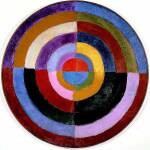 Abstract artworks diverge from depicting recognizable scenes or objects and instead use colors, forms, and lines to create compositions that exist independently of visual references from the natural world. This movement, which gained momentum in the early 20th century, was propelled by artists such as Wassily Kandinsky, Piet Mondrian, and Kazimir Malevich. These artists aimed to explore spiritual, emotional, and More differs from traditional bamboo paintings by focusing on form and color rather than detailed representation. It captures the essence and motion of bamboo through expressive color splashes and shapes, offering a modern twist on the classic subject and appealing to a contemporary aesthetic.
Abstract artworks diverge from depicting recognizable scenes or objects and instead use colors, forms, and lines to create compositions that exist independently of visual references from the natural world. This movement, which gained momentum in the early 20th century, was propelled by artists such as Wassily Kandinsky, Piet Mondrian, and Kazimir Malevich. These artists aimed to explore spiritual, emotional, and More differs from traditional bamboo paintings by focusing on form and color rather than detailed representation. It captures the essence and motion of bamboo through expressive color splashes and shapes, offering a modern twist on the classic subject and appealing to a contemporary aesthetic.

Q: What are some popular bamboo nail art designs?
A: Popular bamboo nail art designs include stylized bamboo stalks and leaves, often combined with other elements like flowers or birds. These designs can range from simple green stripes symbolizing bamboo to more intricate artwork involving detailed shading and color gradients, creating a striking visual effect on the nails.
Q: What are the characteristics of a quality bamboo art brush?
A: A quality bamboo art brush features fine, flexible bristles that can hold a good amount of paint or inkInk, a liquid or paste used for writing, drawing, and printing, has played a crucial role in communication and artistic expression throughout history. Made from various pigments and dyes, ink allows for the transfer of text and images onto surfaces such as paper, fabric, and other materials. Types of Ink There are several types of ink, each serving different purposes More for smooth application. The handle is typically made from bamboo, providing a lightweight and comfortable grip. Good craftsmanship ensures that the bristles remain intact and do not shed during paintingPainting is a fundamental form of visual art that has been practiced for thousands of years. It involves applying pigment to a surface such as canvas, paper, or a wall. Painting can be explored through various styles, techniques, and mediums, each offering unique possibilities for expression and creativity. Historical Background • Ancient Beginnings: The history of painting dates back to More.
Q: What are some ideas for easy bamboo paintingBamboo painting is a celebrated genre within traditional Chinese art, embodying strength, flexibility, and grace. This art form not only represents the physical characteristics of bamboo but also conveys deeper philosophical and cultural meanings. Key Characteristics • Materials: Artists use traditional tools like bamboo brushes, ink sticks, and rice paper. These materials are essential for capturing the essence of bamboo. More with acrylicsAcrylics are a popular and versatile type of paint used in various art forms. Known for their vibrant colors and quick-drying properties, acrylic paints are favored by artists for their flexibility and ease of use. Historical Background • Invention and Early Use: Acrylic paint was first developed in the 1930s by chemists experimenting with synthetic resins. Initially used in industrial More?
A: For easy bamboo paintingBamboo painting is a celebrated genre within traditional Chinese art, embodying strength, flexibility, and grace. This art form not only represents the physical characteristics of bamboo but also conveys deeper philosophical and cultural meanings. Key Characteristics • Materials: Artists use traditional tools like bamboo brushes, ink sticks, and rice paper. These materials are essential for capturing the essence of bamboo. More with acrylicsAcrylics are a popular and versatile type of paint used in various art forms. Known for their vibrant colors and quick-drying properties, acrylic paints are favored by artists for their flexibility and ease of use. Historical Background • Invention and Early Use: Acrylic paint was first developed in the 1930s by chemists experimenting with synthetic resins. Initially used in industrial More, beginners can opt for larger, simplified forms of bamboo stalks using bold, solid colors. Focus on creating clean lines and contrast between the bamboo and the background. AcrylicsAcrylics are a popular and versatile type of paint used in various art forms. Known for their vibrant colors and quick-drying properties, acrylic paints are favored by artists for their flexibility and ease of use. Historical Background • Invention and Early Use: Acrylic paint was first developed in the 1930s by chemists experimenting with synthetic resins. Initially used in industrial More are forgiving and can be layered, making them ideal for experimenting with texture and depth.
Q: How can you learn bamboo paintingBamboo painting is a celebrated genre within traditional Chinese art, embodying strength, flexibility, and grace. This art form not only represents the physical characteristics of bamboo but also conveys deeper philosophical and cultural meanings. Key Characteristics • Materials: Artists use traditional tools like bamboo brushes, ink sticks, and rice paper. These materials are essential for capturing the essence of bamboo. More techniques?
A: To learn Chinese bamboo paintingBamboo painting is a celebrated genre within traditional Chinese art, embodying strength, flexibility, and grace. This art form not only represents the physical characteristics of bamboo but also conveys deeper philosophical and cultural meanings. Key Characteristics • Materials: Artists use traditional tools like bamboo brushes, ink sticks, and rice paper. These materials are essential for capturing the essence of bamboo. More techniques, start by studying traditional compositions and the symbolismSymbolism was a late 19th-century art movement of French, Belgian, and Russian origin. Poets and fine artists were seeking to represent absolute truths using metaphorical images in reaction against realism and naturalism. Content of both images and poetry were suggestive contents to express mystical ideas, emotions, and states of mind. Paul Gauguin, Nave Nave Mahana (1869) The term was coined More of bamboo in Chinese culture. Practice the “Four Gentlemen” strokes, which include the bamboo and are foundational in Chinese brush paintingPainting is a fundamental form of visual art that has been practiced for thousands of years. It involves applying pigment to a surface such as canvas, paper, or a wall. Painting can be explored through various styles, techniques, and mediums, each offering unique possibilities for expression and creativity. Historical Background • Ancient Beginnings: The history of painting dates back to More. Joining a class or following online tutorials that focus on traditional Chinese paintingPainting is a fundamental form of visual art that has been practiced for thousands of years. It involves applying pigment to a surface such as canvas, paper, or a wall. Painting can be explored through various styles, techniques, and mediums, each offering unique possibilities for expression and creativity. Historical Background • Ancient Beginnings: The history of painting dates back to More methods can also be very beneficial.
Q: How has bamboo art in Japan influenced modern design?
A: Bamboo art in Japan has significantly influenced modern design by introducing minimalist and naturalistic elements into contemporary spaces. This art form emphasizes clean lines and functional beauty, inspiring furniture, home decor, and architectural designs that highlight sustainability and serene aesthetics.

Q: What are some creative ways to display bamboo canvas art in your home?
A: Displaying bamboo canvas art can be creatively done by hanging multiple canvases to form a larger panoramic view of a bamboo forest, which can act as a statement piece in a living room or hallway. Alternatively, smaller canvases can be arranged in a staggered pattern to add visual interest and depth to the display.
Q: What is the best way to frame bamboo art?
A: To properly frame a bamboo art frame, ensure that the artwork is securely mounted on a backing that fits perfectly within the frame. Use acid-free materials to protect the artwork from degradation, and choose a glass or acrylic cover that offers UV protection to preserve the colors of the bamboo art from fading.
Q: What are bamboo artifacts and their significance in history?
A: Bamboo artifacts include tools, musical instruments, and ceremonial items made from bamboo, reflecting its importance in daily life and culture, especially in Asia. These artifacts illustrate the versatility of bamboo and its integral role in the development of various civilizations, showcasing craftsmanship and sustainable use of natural resources.
Q: How can bamboo art wall installations transform a room?
A: A bamboo art wall installation can transform a room by adding a touch of nature and a sense of peace. Whether it’s a series of bamboo stalks painted directly on the wall or structured bamboo panels, these installations bring a fresh and airy feel to the space, making it feel more open and inviting.

Q: What distinguishes bamboo art from other botanical art forms?
A: Bamboo art distinguishes itself by its focus on the spiritualQ: What distinguishes bamboo art from other botanical art forms?
A: Bamboo art stands out due to its deep cultural significance and symbolic meanings, particularly in Asian cultures. Unlike other botanical subjects that may focus purely on aesthetic aspects, bamboo is often depicted as a symbol of resilience, strength, and humility. Artists use bamboo to convey philosophical concepts and virtues, integrating these themes into their brush strokes and overall composition.
Q: What are some innovative bamboo paintingBamboo painting is a celebrated genre within traditional Chinese art, embodying strength, flexibility, and grace. This art form not only represents the physical characteristics of bamboo but also conveys deeper philosophical and cultural meanings. Key Characteristics • Materials: Artists use traditional tools like bamboo brushes, ink sticks, and rice paper. These materials are essential for capturing the essence of bamboo. More acrylicsAcrylics are a popular and versatile type of paint used in various art forms. Known for their vibrant colors and quick-drying properties, acrylic paints are favored by artists for their flexibility and ease of use. Historical Background • Invention and Early Use: Acrylic paint was first developed in the 1930s by chemists experimenting with synthetic resins. Initially used in industrial More techniques?
A: When paintingPainting is a fundamental form of visual art that has been practiced for thousands of years. It involves applying pigment to a surface such as canvas, paper, or a wall. Painting can be explored through various styles, techniques, and mediums, each offering unique possibilities for expression and creativity. Historical Background • Ancient Beginnings: The history of painting dates back to More with acrylicsAcrylics are a popular and versatile type of paint used in various art forms. Known for their vibrant colors and quick-drying properties, acrylic paints are favored by artists for their flexibility and ease of use. Historical Background • Invention and Early Use: Acrylic paint was first developed in the 1930s by chemists experimenting with synthetic resins. Initially used in industrial More, artists can experiment with various techniques such as layeringLayering is a fundamental technique in art that involves building up multiple layers of material to create depth, texture, and complexity in a composition. This approach is used in various art forms, including painting, drawing, digital art, and mixed media. Layering allows artists to add richness and dimension to their work, making it more dynamic and engaging. Defining Layering Layering More different shadesIn color theory, a shade is a darker version of a color, created by adding black to the original hue. This concept is essential for artists and designers, as it allows for a range of deeper, more intense tones that can add depth and drama to a composition. Defining Shade A shade results from mixing a pure hue with black. More of green to give depth to the leaves and stalks of bamboo. Or you can use a dry brush technique for a textured effect that mimics the rough surface of bamboo. Consider also incorporating mixed mediaMixed media involves combining various art materials and techniques within a single artwork. This approach allows artists to explore diverse textures, effects, and expressions. Basic Components of Mixed Media • Traditional Media: Includes paints, inks, and pencils. • Non-Traditional Media: Items like fabric, metal, and found objects. • Digital Elements: Incorporating digital prints or using software for certain effects. Techniques More elements to enhance the visual impact of the bamboo, bringing a modern twist to traditional subjects.
Q: How can you incorporate bamboo paintingBamboo painting is a celebrated genre within traditional Chinese art, embodying strength, flexibility, and grace. This art form not only represents the physical characteristics of bamboo but also conveys deeper philosophical and cultural meanings. Key Characteristics • Materials: Artists use traditional tools like bamboo brushes, ink sticks, and rice paper. These materials are essential for capturing the essence of bamboo. More on wall decor?
A: Incorporating bamboo paintingBamboo painting is a celebrated genre within traditional Chinese art, embodying strength, flexibility, and grace. This art form not only represents the physical characteristics of bamboo but also conveys deeper philosophical and cultural meanings. Key Characteristics • Materials: Artists use traditional tools like bamboo brushes, ink sticks, and rice paper. These materials are essential for capturing the essence of bamboo. More on a wall can create a serene and nature-inspired ambiance in any room. Consider a large-scale bamboo mural as a focal point in a living area or bedroom. For a subtler approach, a series of small bamboo paintings can be arranged in a gallery wall format to add an artistic and cohesive look.
Q: What are some creative bamboo paintingBamboo painting is a celebrated genre within traditional Chinese art, embodying strength, flexibility, and grace. This art form not only represents the physical characteristics of bamboo but also conveys deeper philosophical and cultural meanings. Key Characteristics • Materials: Artists use traditional tools like bamboo brushes, ink sticks, and rice paper. These materials are essential for capturing the essence of bamboo. More ideas for home decor?
A: For creative bamboo paintingBamboo painting is a celebrated genre within traditional Chinese art, embodying strength, flexibility, and grace. This art form not only represents the physical characteristics of bamboo but also conveys deeper philosophical and cultural meanings. Key Characteristics • Materials: Artists use traditional tools like bamboo brushes, ink sticks, and rice paper. These materials are essential for capturing the essence of bamboo. More ideas, consider using bamboo motifs in unexpected colors like blues or reds to add a contemporary edge, or paint bamboo stalks in a gradient style from bottom to top to create an ombre effect. Another idea is to blend bamboo elements with geometric shapes or abstract backgrounds for a modern, artistic touch.
Q: What tips can help beginners with bamboo paintingBamboo painting is a celebrated genre within traditional Chinese art, embodying strength, flexibility, and grace. This art form not only represents the physical characteristics of bamboo but also conveys deeper philosophical and cultural meanings. Key Characteristics • Materials: Artists use traditional tools like bamboo brushes, ink sticks, and rice paper. These materials are essential for capturing the essence of bamboo. More on canvas?
A: Beginners interested in bamboo paintingBamboo painting is a celebrated genre within traditional Chinese art, embodying strength, flexibility, and grace. This art form not only represents the physical characteristics of bamboo but also conveys deeper philosophical and cultural meanings. Key Characteristics • Materials: Artists use traditional tools like bamboo brushes, ink sticks, and rice paper. These materials are essential for capturing the essence of bamboo. More on canvas should start with basic sketches to get comfortable with the shape and form of bamboo. Use a thin brush for detailed stalks and leaves, and practice varying the pressure to achieve different thicknesses. Initially focusing on monochromatic schemes can help in mastering shading before moving on to more complex color palettes.
Q: What are some simple bamboo paintingBamboo painting is a celebrated genre within traditional Chinese art, embodying strength, flexibility, and grace. This art form not only represents the physical characteristics of bamboo but also conveys deeper philosophical and cultural meanings. Key Characteristics • Materials: Artists use traditional tools like bamboo brushes, ink sticks, and rice paper. These materials are essential for capturing the essence of bamboo. More easy techniques?
A: For easy bamboo paintingBamboo painting is a celebrated genre within traditional Chinese art, embodying strength, flexibility, and grace. This art form not only represents the physical characteristics of bamboo but also conveys deeper philosophical and cultural meanings. Key Characteristics • Materials: Artists use traditional tools like bamboo brushes, ink sticks, and rice paper. These materials are essential for capturing the essence of bamboo. More techniques, start with basic vertical strokes for the stalks and add leaves using a simple flick of the wrist to create the tapered effect. Using watercolorsWatercolors are a unique and expressive medium, beloved for their translucency and fluidity. This type of paint is water-based, allowing artists to create delicate washes, vibrant hues, and details with ease. Historical Background • Ancient Origins: Watercolor painting dates back to ancient civilizations, including Egypt and China, where it was used for manuscript illumination and decorative arts. • Renaissance Revival: More or diluted acrylicsAcrylics are a popular and versatile type of paint used in various art forms. Known for their vibrant colors and quick-drying properties, acrylic paints are favored by artists for their flexibility and ease of use. Historical Background • Invention and Early Use: Acrylic paint was first developed in the 1930s by chemists experimenting with synthetic resins. Initially used in industrial More can give the paintingPainting is a fundamental form of visual art that has been practiced for thousands of years. It involves applying pigment to a surface such as canvas, paper, or a wall. Painting can be explored through various styles, techniques, and mediums, each offering unique possibilities for expression and creativity. Historical Background • Ancient Beginnings: The history of painting dates back to More a soft, flowing appearance, ideal for creating a tranquil and naturalistic look.
Q: How can beginners approach bamboo paintingBamboo painting is a celebrated genre within traditional Chinese art, embodying strength, flexibility, and grace. This art form not only represents the physical characteristics of bamboo but also conveys deeper philosophical and cultural meanings. Key Characteristics • Materials: Artists use traditional tools like bamboo brushes, ink sticks, and rice paper. These materials are essential for capturing the essence of bamboo. More watercolor?
A: Beginners should start bamboo paintingBamboo painting is a celebrated genre within traditional Chinese art, embodying strength, flexibility, and grace. This art form not only represents the physical characteristics of bamboo but also conveys deeper philosophical and cultural meanings. Key Characteristics • Materials: Artists use traditional tools like bamboo brushes, ink sticks, and rice paper. These materials are essential for capturing the essence of bamboo. More with watercolorsWatercolors are a unique and expressive medium, beloved for their translucency and fluidity. This type of paint is water-based, allowing artists to create delicate washes, vibrant hues, and details with ease. Historical Background • Ancient Origins: Watercolor painting dates back to ancient civilizations, including Egypt and China, where it was used for manuscript illumination and decorative arts. • Renaissance Revival: More by practicing the fluidity of their brush strokes, as watercolor requires a gentle touch. Experiment with wet-on-wet techniques to allow colors to blend naturally, and use a fine brush to add delicate details once the base layers have dried.
You might enjoy reading further articles by Pigment Pool:
Pop Art Ideas: Easy Painting Techniques to Capture the Warhol Essence
Understanding Chinese Art Styles: From Shan Shui to Guohua
20 Gorgeous Chinese Art Tattoos That Will Make You Want to Get Inked
Fine Art, Finer Returns: Building a Solid Art Investment Strategy in 2024
How to Create Post-Impressionism Art: Easy Steps to Vibrant Paintings
Guillaume Apollinaire, Surrealism and Today’s AI: Above Reality
Famous Abstract Paintings: Joan Miró Art Works You Must Know
Full Disclosure: Clicking on product links could mean a tiny commission for me, at no extra cost to you.

